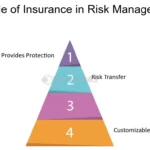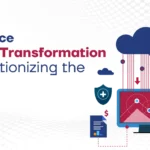Car insurance has become an essential part of the American driving experience. It’s so ingrained in the system that it’s almost unthinkable to drive without it. But have you ever wondered how car insurance evolved to where it is today? From a simple, mandatory requirement to a complex, multi-faceted system that offers a range of coverage options, the history of car insurance in the United States is as dynamic as the automobile industry itself.
This article will take you through the journey of car insurance, from its humble beginnings in the early 20th century to the comprehensive coverage options available today. Along the way, we’ll explore how car insurance transformed from a simple mandatory requirement into an essential financial safety net for millions of drivers.
Outline
- Introduction
- The role of car insurance in modern society.
- Why understanding the history of car insurance is crucial.
- The Early Days: The Birth of Car Insurance
- The invention of the automobile and the need for insurance.
- The first automobile accidents and the first insurance policies.
- The 1920s: The Rise of the Automobile and the First Insurance Companies
- The rapid growth of car ownership in the 1920s.
- The creation of the first insurance policies tailored for automobiles.
- The 1930s-1940s: The Expansion of Car Insurance
- The role of car insurance during the Great Depression.
- The growth of the insurance industry during and after World War II.
- The 1950s-1960s: The Standardization of Car Insurance Policies
- The emergence of state-mandated insurance laws.
- The standardization of coverage and the introduction of liability insurance.
- The 1970s: The Growth of Comprehensive Coverage
- The introduction of comprehensive and collision coverage.
- The role of the government in regulating car insurance.
- The 1980s: The Rise of Underwriting and Risk Assessment
- The development of risk assessment models.
- The rise of discounts and pricing based on driving behavior.
- The 1990s: Technological Advancements in Car Insurance
- The introduction of telematics and the role of technology.
- The impact of the internet on purchasing car insurance.
- The 2000s: The Evolution of Customer Service and Digital Access
- The move towards online quotes and policy management.
- The rise of customer-centric insurance models.
- The 2010s: The Shift Toward Personalized and On-Demand Insurance
- The introduction of pay-per-mile and usage-based insurance.
- How insurance companies began offering more customized coverage options.
- The 2020s: The Future of Car Insurance
- Emerging technologies like autonomous vehicles and their potential impact.
- The shift toward greener insurance policies and eco-friendly incentives.
- How Car Insurance Became a Legal Requirement
- A look at the history of mandatory car insurance laws.
- The role of state governments in enforcing coverage.
- The Different Types of Car Insurance Coverage Available Today
- An overview of liability, comprehensive, and collision coverage.
- Additional coverage options like personal injury protection (PIP) and uninsured motorist coverage.
- The Impact of Car Insurance on Society
- How car insurance has improved public safety and financial stability.
- The economic impact of car insurance in the United States.
- Conclusion
- Recap of the key points in the history of car insurance.
- How car insurance has shaped the driving experience in America.
- FAQs
- Common questions about car insurance.
Introduction
Car insurance is now an integral part of owning and operating a vehicle in the United States. Whether it’s a basic liability policy or a comprehensive coverage plan, insurance is a necessity for drivers. But when did this all begin, and how did we get here? To truly understand car insurance, we need to look back at its history, from the early days of automobiles to the modern, multi-tiered system that exists today.
In this article, we’ll explore the fascinating evolution of car insurance, covering everything from the first policies to the high-tech options available now. Along the way, we’ll see how car insurance has grown from being a mere legal requirement to a key part of financial protection for drivers nationwide.
The Early Days: The Birth of Car Insurance

The automobile was invented in the late 19th century, but it wasn’t until the early 1900s that cars began to be mass-produced and sold to the general public. With this new mode of transportation came new risks. Early car owners were faced with the challenge of accidents, damage to vehicles, and injuries—both to themselves and others. But the idea of insuring an automobile was slow to take off.
In 1897, the first known automobile insurance policy was written in the United States. It was a liability insurance policy, meant to protect the driver from damage they might cause to others while on the road. This marked the beginning of the car insurance industry, but it remained a niche service at this time.
The 1920s: The Rise of the Automobile and the First Insurance Companies
By the 1920s, the automobile had become a staple of American life. Car ownership was growing rapidly, and with that growth came an increase in accidents, collisions, and the need for protection. Insurance companies began to recognize the need for policies that specifically covered automobiles.
In 1925, the first dedicated automobile insurance company, State Farm, was established, and by the late 1920s, a handful of other companies began to offer car insurance policies. These early policies were relatively simple, providing coverage for vehicle damage and liability.
The 1930s-1940s: The Expansion of Car Insurance
The Great Depression and World War II had a profound effect on the car insurance industry. During the Depression, car ownership dipped as people lost their jobs and had less money to spend on vehicles. However, after the war, the American economy boomed, and car ownership surged once again.
During the 1940s, the first comprehensive auto insurance policies began to emerge. These policies provided more extensive coverage, including protection against theft, vandalism, and weather-related damage. As the industry expanded, so did the regulatory framework around car insurance, with states beginning to enact laws requiring minimum liability coverage.
The 1950s-1960s: The Standardization of Car Insurance Policies
By the 1950s, car insurance had become a standard offering for most American drivers. During this period, liability insurance became mandatory in many states. Insurance companies also began to standardize the policies they offered, making it easier for consumers to understand what was covered.
The National Highway Traffic Safety Administration (NHTSA) was also founded in 1966, playing a role in ensuring that vehicles met safety standards, which in turn influenced the insurance industry.
The 1970s: The Growth of Comprehensive Coverage
The 1970s saw the development of more comprehensive coverage options, with drivers able to add collision and comprehensive insurance to their policies. This allowed for protection in a wider range of situations, from car accidents to non-collision incidents like natural disasters or vandalism.
As the number of cars on the road continued to rise, car insurance became a significant part of the American financial system. During this decade, insurance companies began offering discounts for drivers who took defensive driving courses, further increasing the accessibility of car insurance for consumers.
The 1980s: The Rise of Underwriting and Risk Assessment
In the 1980s, insurance companies began to adopt more sophisticated underwriting techniques. They used statistical data and risk assessment models to evaluate the risk associated with insuring different drivers. This allowed insurers to offer more personalized pricing, with discounts for good drivers and higher rates for high-risk individuals.
This was also the time when the idea of “no-fault” insurance began to take hold, a system where each driver’s own insurance company covers their medical expenses, regardless of who was at fault in the accident.
The 1990s: Technological Advancements in Car Insurance
By the 1990s, technology began to change the car insurance industry. The rise of the internet allowed drivers to compare insurance quotes easily and purchase policies online. Insurance companies also began to use telematics, or in-car technology, to monitor driving behavior and adjust premiums accordingly.
This era also saw the rise of “pay-as-you-go” models, where drivers could pay for insurance based on their actual driving habits, rather than a flat fee.
The 2000s: The Evolution of Customer Service and Digital Access

As technology advanced further, car insurance companies began to offer more digital options for managing policies. Drivers could access their policy details online, make payments, and file claims electronically. Customer service became more streamlined and accessible, making it easier for drivers to interact with their insurers.
The 2010s: The Shift Toward Personalized and On-Demand Insurance
The 2010s saw a shift toward even more personalized insurance options. Telematics continued to grow in popularity, with insurance companies offering pay-per-mile or usage-based policies. Drivers who drove fewer miles or demonstrated safe driving habits were rewarded with lower premiums.
This period also saw the rise of on-demand insurance, which allows drivers to purchase coverage for short periods of time, such as for a road trip or a rental car.
The 2020s: The Future of Car Insurance
Looking to the future, car insurance is set to change even more dramatically. The rise of autonomous vehicles, electric cars, and green insurance policies could reshape the industry in significant ways. Companies may begin to offer more eco-friendly policies that encourage the use of electric cars or reward drivers for adopting sustainable practices.
Additionally, advancements in AI and machine learning could further refine risk assessment models, making car insurance even more personalized and tailored to individual needs.
How Car Insurance Became a Legal Requirement
Car insurance didn’t become mandatory in the United States overnight. It was a gradual process that began in the 1920s and continued through the 1950s and 1960s. Today, all 50 states require drivers to carry some form of auto insurance, with each state setting its own minimum coverage requirements.
The Different Types of Car Insurance Coverage Available Today
Car insurance has evolved to offer a variety of coverage options. These include:
- Liability Insurance: Covers damage or injury to others when you’re at fault.
- Comprehensive Insurance: Covers non-collision damage, such as theft or weather-related damage.
- Collision Insurance: Covers damage to your own vehicle in an accident.
- Uninsured/Underinsured Motorist Coverage: Protects you if you’re involved in an accident with a driver who lacks adequate insurance.
- Personal Injury Protection (PIP): Covers medical costs for you and your passengers, regardless of fault.
The Impact of Car Insurance on Society
Car insurance has had a profound impact on society, ensuring that drivers can financially recover from accidents and reducing the burden on the legal system. It has also helped to improve road safety by incentivizing safer driving behavior.
Conclusion
From its beginnings as a basic liability policy to the sophisticated, personalized insurance options available today, the history of car insurance in the United States is a testament to the changing nature of transportation, technology, and risk management. As the automobile industry continues to evolve, so too will the world of car insurance, offering new and innovative ways to protect drivers and their vehicles.
FAQs
- Why is car insurance mandatory?
- Car insurance is mandatory to ensure that drivers are financially protected in case of accidents and to protect other road users.
- What does comprehensive car insurance cover?
- Comprehensive car insurance covers damage to your car that is not caused by a collision, such as theft, vandalism, or weather-related incidents.
- How can I lower my car insurance premiums?
- You can lower your premiums by maintaining a good driving record, choosing higher deductibles, or opting for usage-based insurance policies.
- What is no-fault insurance?
- No-fault insurance allows each driver’s insurance company to cover their medical expenses, regardless of who was at fault in the accident.
- How has technology impacted car insurance?
- Technology has made it easier to compare insurance quotes, purchase policies online, and manage claims. It has also enabled the use of telematics to personalize premiums based on driving behavior.










